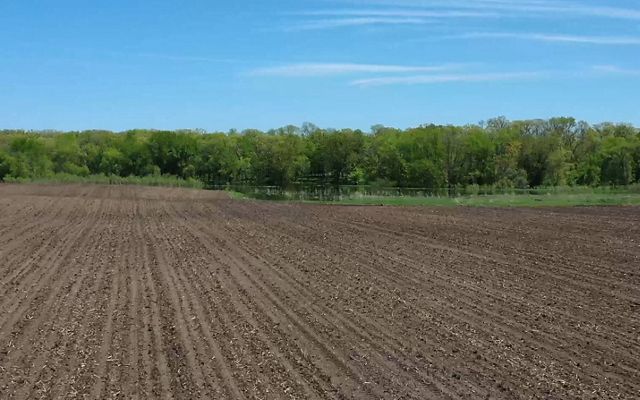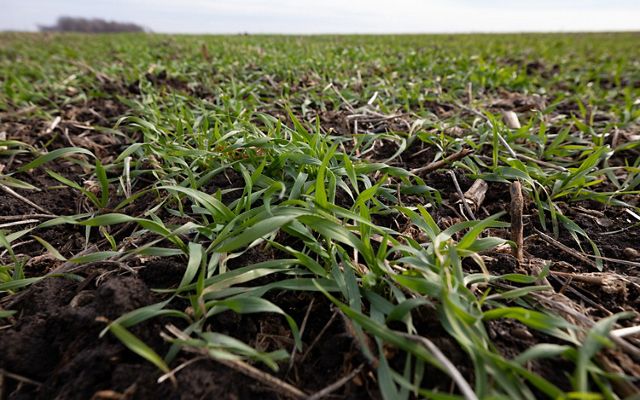We Need to Grow the Supply Chain to Build Soil Health
Cover crops are good for the environment and farmers. Why aren’t they in more fields?
On a cold and windy autumn day in Owatanna, T.J. Kartes looks down at long rows lined with short grasses that add a splash of color to a field that a few weeks before was filled with corn.
Most corn and soybean farmers in Minnesota and the Midwest till their fields after harvest, leaving them black and bare.
“I like to see the fields green in the fall and green in the spring,” says Kartes, owner-operator of Kartes Seeds, a small family business based in Blooming Prairie that specializes in providing cover crop seed and technical assistance to farmers.

What is a cover crop?
cov·er crop
/ˈkəvər ˌkräp/
noun
a crop grown for the protection and enrichment of the soil.
Cover crops are grasses, legumes and forbs planted to enrich the soil. They can provide added value to farmers in the form of an additional cash crop or supplemental feed for cattle. Examples of cover crops include cereal rye, oats, barley, radishes and forage peas.
Benefits of Cover Crops
The benefits of cover crops include improved water quality in rivers, lakes and streams because the plants make use of nutrients and prevent erosion. They also help store more carbon in the ground and, in fact, are among the most effective natural climate solutions available in Minnesota.
The farmers Kartes works with plant cover crops because they help save time and money, boosting profitability, while also improving soil health, which can boost a farm’s productivity in good years and in bad. “Green is also the color of money,” he remarks.
Kartes, who also works as a regional representative for Saddle Butte Ag, a national cover crops supplier, digs into the no-till field planted with rye as a cover crop and brings up a handful of dark, rich soil. “It looks like good, moist chocolate cake. You can see little holes in it. That’s what good soil should look like.”
He then spots a few worms and explains they are great indicators that not tilling the soil and planting cover crops is working. “They recycle nutrients. They pull crop residue down and recycle it. Their castings are more fertile than fertilizer. I always call them the heroes of the soil health world.”
Quote: Scott Lightly
I think if people try cover crops, they’re going to like them.

Scott Lightly, a fifth-generation farmer who grows corn and soybeans on 360 acres he owns in Austin, is all-in on cover crops and no-till after first trying them out a decade ago.
“There is a cost to planting cover crops, however, the benefits on the backside of it come from less tillage, less diesel fuel, less fertilizer—those things add up in a hurry. I think if people try cover crops, they’re going to like them.”
Barriers to Planting More Cover Crops
Despite the benefits of cover crops for improving water quality, tackling climate change and, in many cases, boosting farmers’ bottom lines, they are only planted on about 7% of Minnesota’s farmland.
Why is most of our farmland idle for half the year or more rather than green and growing?


The supply chain is not currently set up to help many farmers who want to plant cover crops.
“There are real barriers to getting cover crops on more acres,” says Leif Fixen, TNC’s agricultural strategy manager in Minnesota. “Just like anything else, there are supply chains behind this practice. You're growing essentially a whole other crop. You have inputs like seed that you're going to have to get. You're going to need new equipment to get that seed in the ground during tight timing windows.”
One of the biggest problems is a lack of equipment, which can be expensive for ag retailers and farmers alike.
That’s why The Nature Conservancy is helping a half dozen businesses in central, southern and western Minnesota that sell farm products, such as seed and fertilizer, or services, like weed control and cover crop planting, buy or lease the equipment they need.
Examples include a seed tender Kartes purchased that is helping reduce farmers’ downtime by allowing him to transport a ton or more of seed directly to their fields so they don’t have to drive back and forth to the seed shop to reload.

Ben Mergen, who grows corn, soybean and alfalfa in Stearns County, created a new small business planting cover crops in the region after TNC helped cover the cost of a no-till drill that gets seed into the ground while minimizing soil disturbance.
The ag retailers TNC is working with planted cover crops on 62 new farms last year thanks to the new equipment. TNC is also advocating for the Minnesota Legislature to increase state funding for soil health programs, including financial assistance for businesses that need additional equipment to help farmers plant cover crops.
Quote: Leif Fixen

There ends up being all this related economic activity that follows these soil health practices.
TNC is also providing training including seminars and webinars on cover crops and other soil health practices to certified crop advisers, agronomists and others who provide technical assistance to farmers. “Our goal is to make sure they can help farmers figure out how to incorporate these practices into their operations,” Fixen says.
Simply getting more farmers, ag retailers and the rest of the supply chain to understand the economic potential of putting more conservation practices into place is another challenge.
Fixen’s research shows there’s a $130 million market for seed if just half of Minnesota’s farmland were planted with cover crops. Plus, there would be increased demand for services from ag retailers and other businesses planting cover crops and getting the field ready for the cash crop. “There ends up being all this related economic activity that follows these soil health practices,” Fixen says.
How Farmers Can Plant More Cover Crops
Anna Fox, origination team leader for Cargill, which provided a grant to TNC to help pay for some of the equipment, says the key is ensuring that everyone who works with farmers makes it as easy as possible for them to plant cover crops, particularly if they have never done so before.
“Rural America is like everywhere else. The labor shortage is real. We often hear growers saying, ‘I wish I had more hours in the day.’ Time is one of the scarcest resources that growers have and implementing a cover crop system, a new sustainability practice, that does take more time and preparation. And there are narrow windows to apply cover crops and to be successful at it. The next step for wider adoption of these practices is making sure that there are regional partners that producers can reach out to and work with.”
Fixen would love for all of Minnesota’s farmers to implement soil health practices, but he does not recommend that anyone go from no cover crops to 100 percent in a single year. “The best approach is for farmers to just test it out,” he says. "By increasing the number of businesses offering soil health services, we make it easier and less risky for farmers to do just that."
Lightly says landowners and farmers are also more likely to plant more cover crops if they see some success on their land or nearby. “Farmland is expensive. Why wouldn’t you want to take the best care of it you possibly can?”



